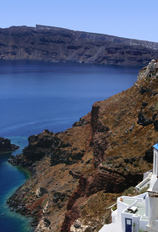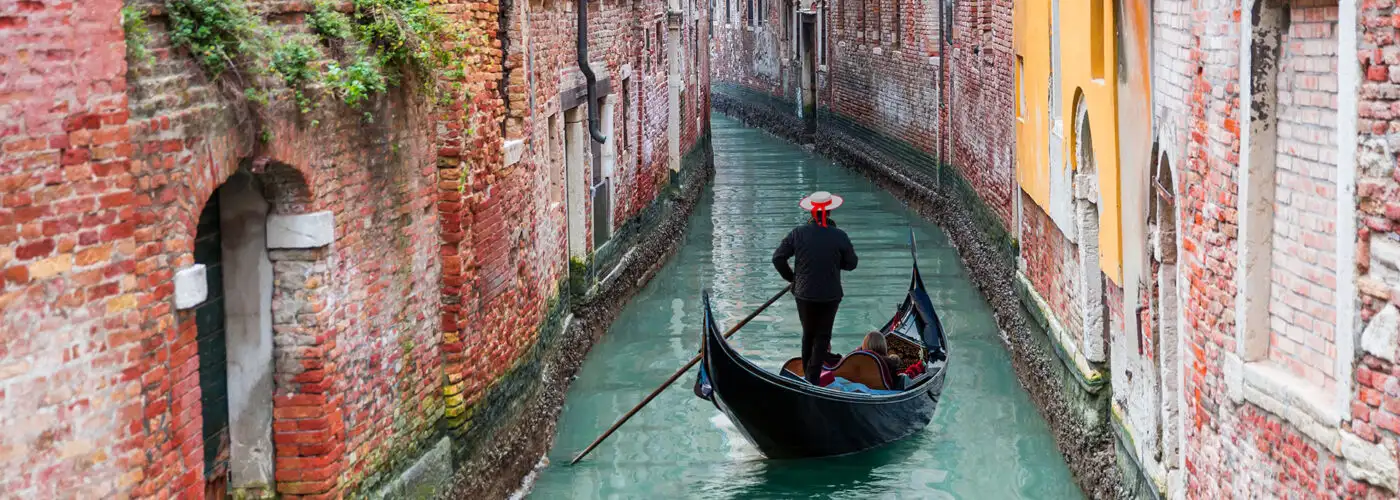NVNQVAM DERELICTA. Never abandoned. The phrase emblazoned on the wall of the Doge’s Palace in Venice may have originally related to religion, but it’s a perfect motto for a city that has endured 1,400 years of nearly constant siege—from Barbarians, Napoleonic armies, encroaching waters, and tourist hordes. These days, the high cost of living is driving more natives to surrounding cities; but find a local and you’ll discover a fierce love and protective spirit toward this beautiful, watery oddity of a metropolis. Here’s what Venetians want you to know about Venice.
Special thanks to Monograms Local Host Igor Scomparin and the many other locals who offered up advice, opinions, and great stories about their hometown.
It’s Good to Get Lost
Here’s a good general rule: If you don’t get lost, you’re not doing it right. Even visitors with GPS-like senses of direction will likely be bested by the meandering streets of the city. There’s no better way to explore the lovely maze of Venice than in a haze of mild confusion. The downside of getting lost, of course, is that it takes longer than you’d expect to get anywhere. So, locals advise, give yourself extra time to get around.
Venice Has Its Own Language
It may have a long and rich history, but Italy as we know it has been a country for fewer than 200 years. So it’s no surprise that regional dialects and languages endure alongside mainstream Italian. Veneto, or Venetian, is a distinct language that even has its own dialects. Want to really impress a local? Bust out a “Ciao vecchio/vecchia” (a greeting that roughly translates to “Hi old boy/old girl”), or simply soften the z to an s sound when you say “grazie.”
There’s a Right Way to Enjoy Venice by Water
When Venice was its own city-state, pollution of the water was one of few crimes punishable by death. Today, water is still a sacred and vital part of the city, and, as one local put it, “Venice is best seen from the water.” But water also causes a lot of damage in the city, some of which is preventable.
In the old days, boats were slow moving and people-powered, so they didn’t produce much wake. But now, faster-moving and larger boats create larger waves that penetrate buildings’ isolation layers and do more structural damage. So whenever you can, choose boats that obey the speed limit (yes, Venice waterways have speed limits). In general, vaporetti (water buses) and traditional wooden boats tend to take it slower than water taxis.
Napoleon Has Not Been Forgiven
When Napoleon’s army invaded Venice after a protracted siege, it did everything it could to crush the identity and spirit of the feisty Venetians. That included destroying all of the lions (a winged lion is the symbol of Venice) that were carved, sculpted, and painted onto buildings and bridges. While many have been replaced, if you explore the city with a local, they’ll be sure to draw your attention to the places where once-noble lion heads were chiseled off, leaving behind only rough stone scars that still sting, at least in the hearts of Venetians.
The Acqua Alta Is a Fact of Life
The acqua alta (the exceptionally high tides that flood parts of the city) may be a strange sight for visitors, but for locals, they’re a fact of life. And with habituation comes adaptation, and with adaptation comes an app. Locals (and an increasing number of savvy visitors) know to keep tabs on the tides with an app such as hi!tide Venice (iOS | Android).
Another piece of advice from a local: Don’t have a heart attack during the acqua alta. Since ambulance boats can’t get under many of the bridges during the super high tides, emergency medical care can be compromised. Now that’s good inspiration to skip the extra scoop of gelato.
For a Weather Forecast, Look to the Archangel
“When the archangel pisses on the basilica, it’s going to rain.” The local saying is as colorful as it is useful. It refers to the weather vane (a golden angel Gabriel) that crowns the top of the campanile bell tower in the Piazza San Marco. When the angel turns northeast to face the Basilica di San Marco, it’s taken as a sign of shifting winds and coming rain by locals.
Don’t Walk Between the Columns
When most visitors make their way through the Piazza San Marco and the smaller Piazzetta di San Marco, they’re busy dodging tourists ogling facades, hawkers wearing striped shirts, and long lines of people waiting to see the interior marvels of the basilica and campanile—not looking out for bad luck.
Locals, on the other hand—at least the superstitious ones—make it a point not to walk between the two columns topped by statues of the city’s patron saints that guard the water’s edge. Since the space between the two columns used to be a spot for public executions, it’s considered bad luck to walk between them today.
Love the Region, Not Just the City
Tuscany, Sicily, Umbria. In some parts of Italy, the regions are as well known as the most famous cities. But Venice has long overshadowed its province Veneto, which is a shame for visitors. Mountains, vineyards, and medieval towns dot the landscape beyond the city, offering memorable day trips and extended explorations. Check out Marostica or Asolo, or, if you’re ambitious, head to the nearby Dolomites, the mountain range that you can see from Venice on clear days. There are plenty of other incredible spots to visit nearby, and locals think highly of the province.
Locals Stand Up for Coffee
Venetians have long known what standing-desk converts have only recently discovered: Sometimes, standing is better than sitting. At cafes in the morning, you’ll find locals lining up at the counter, the bar, or tall tables as they knock back their morning espressos. In Venice, standing isn’t just a way to blend in with locals, it’s a way to save some money as well. Coffee enjoyed sans chair tends to be significantly less expensive than the same cup enjoyed from a slightly lower elevation.
Try the Local Specialties
Certain foods are decidedly Venetian, and locals take great pride in them. Squid-ink spaghetti, risotto with prawns and zucchini, and marinated sardines draw heavily from the surrounding waters, while risi e bisi (rice and peas) and pasta e fasioi (pasta and beans) embrace the Italian knack for uniting beans and starch. And world-favorite tiramisu was invented in nearby Treviso and has found a happy second home in Venice.
More from SmarterTravel:
- Planning a Trip to Europe: Your 10-Step Guide
- The Best Shoes to Wear in Europe
- Europe Travel Scams Every Tourist Needs to Know
Editor’s note: This story was originally published in 2014. It has been updated to reflect the most current information.
We hand-pick everything we recommend and select items through testing and reviews. Some products are sent to us free of charge with no incentive to offer a favorable review. We offer our unbiased opinions and do not accept compensation to review products. All items are in stock and prices are accurate at the time of publication. If you buy something through our links, we may earn a commission.
Related
Top Fares From
Today's Top Travel Deals
Brought to you by ShermansTravel
Greece: 9-Night Vacation, Incl. Meteora &...
Exoticca
 vacation
$2099+
vacation
$2099+
New Year Sale: Luxe, 9-Nt Alaska...
Oceania Cruises
 cruise
$3599+
cruise
$3599+
Ohio: Daily Car Rentals from Cincinnati
85OFF.com
 Car Rental
$19+
Car Rental
$19+




